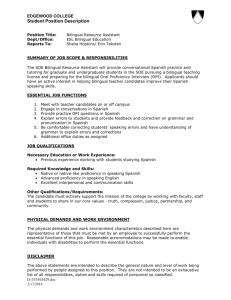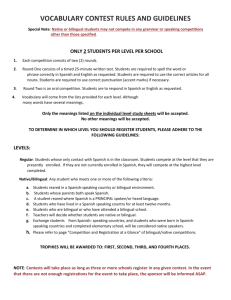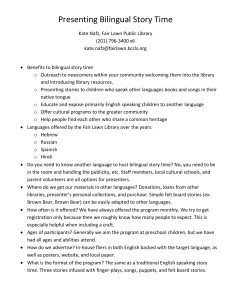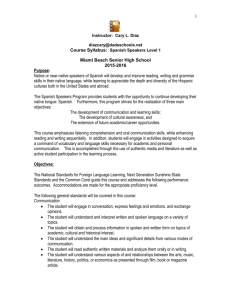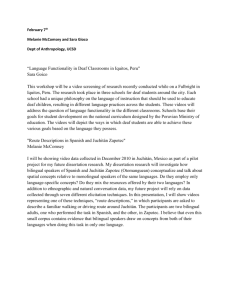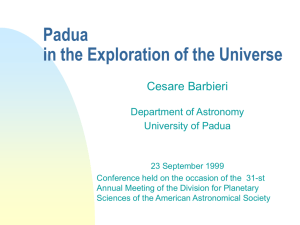EFFECTIVE BILINGUAL EDUCATION/BARBIERI TWO WAY
advertisement
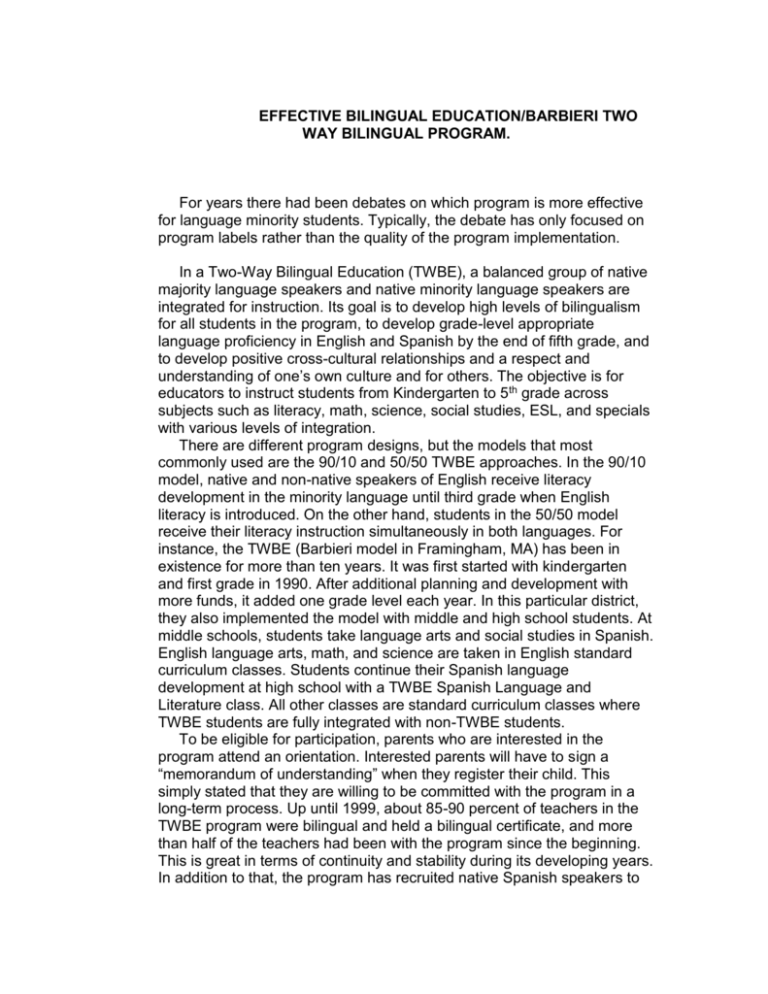
EFFECTIVE BILINGUAL EDUCATION/BARBIERI TWO WAY BILINGUAL PROGRAM. For years there had been debates on which program is more effective for language minority students. Typically, the debate has only focused on program labels rather than the quality of the program implementation. In a Two-Way Bilingual Education (TWBE), a balanced group of native majority language speakers and native minority language speakers are integrated for instruction. Its goal is to develop high levels of bilingualism for all students in the program, to develop grade-level appropriate language proficiency in English and Spanish by the end of fifth grade, and to develop positive cross-cultural relationships and a respect and understanding of one’s own culture and for others. The objective is for educators to instruct students from Kindergarten to 5th grade across subjects such as literacy, math, science, social studies, ESL, and specials with various levels of integration. There are different program designs, but the models that most commonly used are the 90/10 and 50/50 TWBE approaches. In the 90/10 model, native and non-native speakers of English receive literacy development in the minority language until third grade when English literacy is introduced. On the other hand, students in the 50/50 model receive their literacy instruction simultaneously in both languages. For instance, the TWBE (Barbieri model in Framingham, MA) has been in existence for more than ten years. It was first started with kindergarten and first grade in 1990. After additional planning and development with more funds, it added one grade level each year. In this particular district, they also implemented the model with middle and high school students. At middle schools, students take language arts and social studies in Spanish. English language arts, math, and science are taken in English standard curriculum classes. Students continue their Spanish language development at high school with a TWBE Spanish Language and Literature class. All other classes are standard curriculum classes where TWBE students are fully integrated with non-TWBE students. To be eligible for participation, parents who are interested in the program attend an orientation. Interested parents will have to sign a “memorandum of understanding” when they register their child. This simply stated that they are willing to be committed with the program in a long-term process. Up until 1999, about 85-90 percent of teachers in the TWBE program were bilingual and held a bilingual certificate, and more than half of the teachers had been with the program since the beginning. This is great in terms of continuity and stability during its developing years. In addition to that, the program has recruited native Spanish speakers to provide support services, such as bilingual special educators, bilingual social workers, bilingual counselors, and abilingual school psychologist. In the Barbieri TWBE, the program is designed for each grade level for both Spanish and English speakers and how each language is used for different subjects. L1 stands for students’ native language, L2 stands for the second language. Within the teacher’s instruction chart, whenever the figure shows L1/L2, it simply means that 50% of the subject is taught in L1 and 50% is taught in L2. Shaded areas in the chart illustrate that students from both language backgrounds are integrated for instruction. Unshaded areas represent at times that students are grouped by language group of their own. One of the advantages about the TWBE program is that teachers and administrators are the ones who will have to make decisions about which language is used for initial instruction, curriculum content, and the amount of student integration. One of the goals of the barbieri TWBE program is that students will demonstrate academic achievement at grade level in both languages by the end of fifth grade. In order to see the change, TWBE student scores are compared to the national norm on the Standford Achievement Test (SAT) for English and the Aprenda Test for Spanish. The grade level performance is reflected in a average score of 50 NCE (National Curve Equivalency scores). Statistics shows that both groups of students perform well above grade level by fifth grade. This simple means that the Spanish speakers are able to maintain their native language and the English speakers develop their Spanish to appropriate levels as measured by the Aprenda Test. In conclusion, the Barbieri TWBE approach is dynamic. Its flexibility in implementation of the model give administrators and teachers ways of setting up the program according to the students’needs and diversity. Statistics and past outcomes of student’s performances have shown that the TWBE might not be the best, but it is one of the leading and effective tool to be used within our school system.


